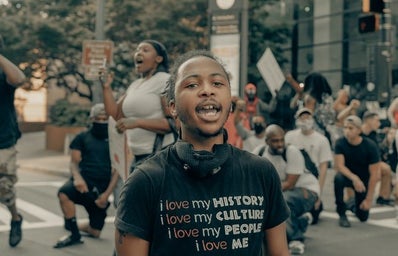It has become all too easy these days as Canadians to attempt to distance ourselves from America. Especially after the Trump administration, it almost became commonplace for Canadians to say, “well, at least we’re not like America.” While these statements are easily meme-able, it should be strongly noted that the Canadian history of racism, segregation, discrimination, corruption and slavery go back just as far as America’s.
Just like our neighbours to the south, Canada also enslaved African and Indigenous peoples. True, Canada has never had the extent of legalized discrimination, like the Jim Crow laws, but there is still a very shameful history of segregation, police brutality and fights for civil freedoms. During Black History Month, take a look at some of the ways Canada has been shaped by Black people fighting for their safety — a fight which, if ignored, risks a dangerous repetition.
Slavery in Canada was generational
According to the Canadian Museum of Human Rights, slavery in Canada is often overlooked due to the fact that many American enslaved people sought refuge here. Canada officially ended slavery in 1833, when all British colonies were forced under the Slavery Abolition Act. However, this was less than 30 years before the United States ended slavery, meaning the narrative of freedom for American slaves really only applied to one or two generations of people at most. Enslaved people in Canada were treated as property, owned by their masters. This meant that should the slave owner pass away, the enslaved person was still kept in the slavers family, similar to land ownership or literal family heirlooms. This objectifying behaviour also meant that if an enslaved person had children, all children would be forced to into slavery as well.
Chloe Cooley’s defiance paved the way for anti-slave Canadian legislation
For years before the Slavery Abolition Act came into effect, there were whispers of abolition across Ontario. On a smaller scale, certain townships were beginning to forbid the act of purchasing new slaves. For many slavers who had made fortunes from selling slave labour, this meant trouble. On the chance that these soon-to-be-true rumours against slavery would come into effect, slave owners would smuggle and sell those they enslaved south through the States. Chloe Cooley was one of these slaves. But she didn’t go without a fight. As she was being bound and thrown into a boat across Niagara against her will, witnesses saw. Word soon got to John Graves Simcoe, the lieutenant-governor of the Niagara region at the time. Horrified at the abuse, Simcoe went on to create North America’s first official anti-slavery legislation. Word of this legislation would quickly travel through the States, providing passage for Harriet Tubman and other abolitionists as part of the Underground Railroad.
The last racially segregated Canadian public school stood until 1983
It is important to remember that the timeline of Canadian and American racial segregation overlap. It’s also important to remember that while a racist law may be overturned in a single vote, it can take years, if not decades, to unlearn generational racism. The education system in Ontario is widely attributed to Egerton Ryerson, often called the father of public education provincially. But it is worth noting that his legislation created the first racially segregated school, which would later continue into Canada’s infamous residential school system, also known as cultural genocide to the Indigenous peoples. Racially segregated schools in Canada were commonplace until the 1960s when slow legislation introduced by the first-ever Black MPP, Leonard Braithewaite, forced integration. However, even though some places were legally required to allow Black students, discrimination and denial was still commonplace. The last racially segregated public school was in Nova Scotia. It wasn’t until the school’s closure in 1983 that Canada’s education system became officially racially integrated (excluding residential schools).
Of course, it would be impossible to name all the accomplishments Black Canadians have done for the country, but it’s important to remember during Black History Month (and every month, for that matter) that Canada shouldn’t be put on a pedestal just because slavery was abolished here sooner. Injustices are important to discuss so that they can be rectified and not repeated. Black Canadians have been an incredible part of the country’s history, including creating some of the first domestic violence shelters, creating women-led anti-racism publications, setting Olympic world records, gaining a spot in the National Baseball Hall of Fame, and of course, becoming the face on the $10 bill as a tribute for fighting racism. Black history is incredibly diverse because people are incredibly diverse. Acknowledging history during both Black History Month and beyond is important because it ensures an important cultural heritage isn’t erased.



